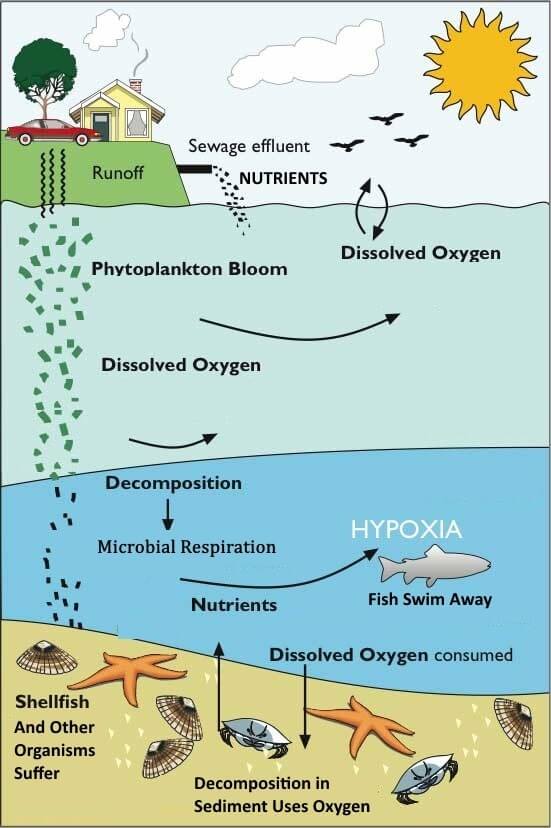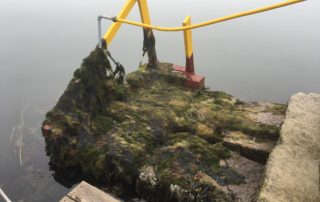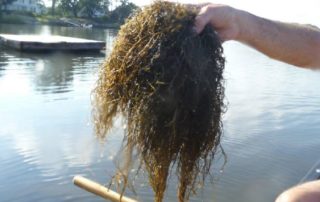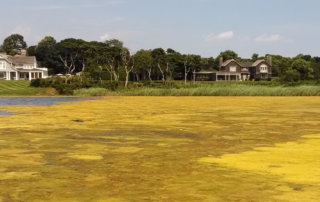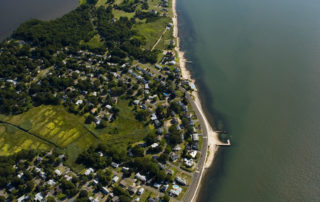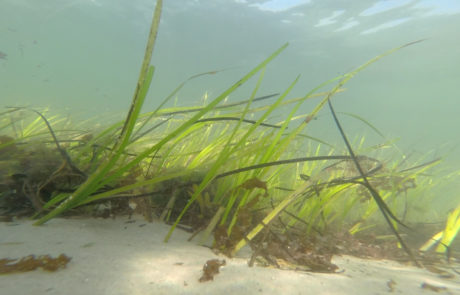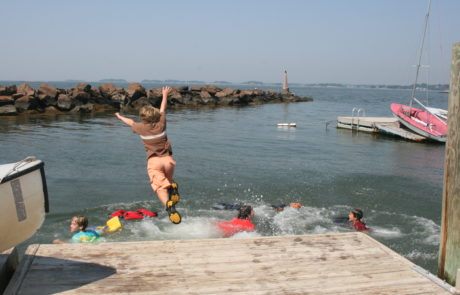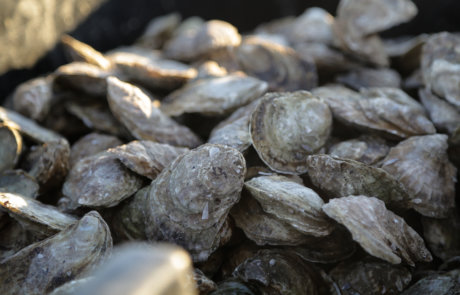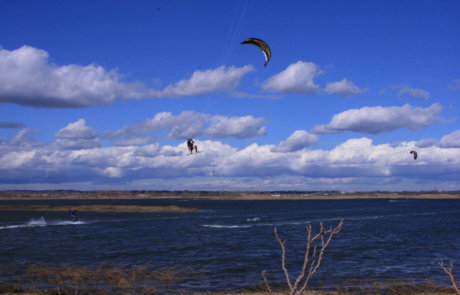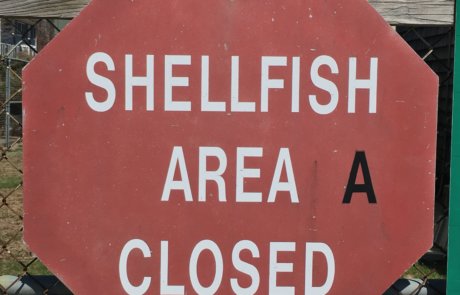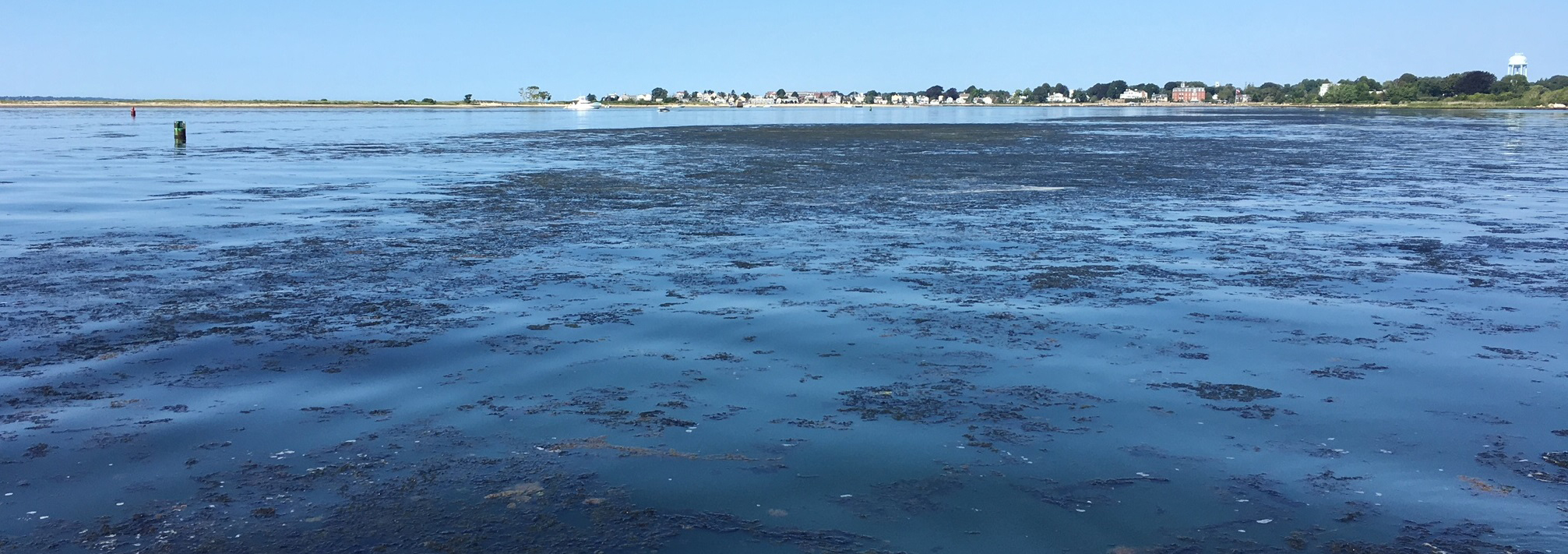
The Problem

What is nitrogen pollution?
Where does it come from?
Nitrogen is a nutrient critical for all life, but when too much nitrogen from wastewater, fertilizers and the atmosphere enters our streams, harbors and oceans, it fuels toxic algae blooms, fish kills and shellfish poisoning that threaten public health and undermine quality of life.
Scientists have determined nitrogen from sewage makes up the largest contribution to Long Island Sound while fertilizers that wash into streams, harbors are the second largest source. With more than 20 million people living within 50 miles of the water’s edge – what we do on the land affects the health and cleanliness of our streams, groundwater, bays and Long Island Sound.
Excess nitrogen from wastewater and fertilizers promotes the rapid growth of algae triggering “blooms” that reduce water clarity and prevent sunlight from reaching seagrass meadows. When algae die, they sink to the seafloor and decompose, using up oxygen and creating “dead zones” in the water where fish and other marine life can’t survive. Some algae produce neurotoxins that contaminate shellfish. Excess nitrogen can cause overgrowth of nuisance seaweeds that smother seagrass, generate thick mats that wash up on beaches or coat the seafloor with dense decaying layers of “black mayonnaise”. These conditions threaten public health and disrupt enjoyment of beaches and harbors.

What’s at stake?
Estuaries like Long Island Sound are among the most productive habitats on earth. In these places, where fresh water from rivers meets and mixes with seawater, unique plant and animal communities thrive. Estuaries serve as nurseries, breeding and feeding grounds for countless species of fish, mammals, birds and other wildlife.
People also depend on Long Island Sound for the natural, cultural and commercial benefits it provides – including more than $9 billion generated annually through fishing, tourism, seafood and recreation. But, with nitrogen levels at a tipping point and our bays and harbors suffering, the coastal and marine resources we count on are under threat.

We can fix it!
Fortunately, scientists and engineers have developed proven solutions for upgrading our wastewater systems and changing the way we use fertilizers. If we use these solutions, we can help restore and sustain clean, healthy waters in the Sound that we depend upon for our livelihoods and well-being.
Communities around Long Island Sound are not alone in facing these problems or in seeking solutions to address them. In the 1970’s, Florida’s Tampa Bay experienced fish kills, dead zones and noxious seaweeds that made the estuary unhealthy and unwelcoming. Responding to public outcry in 1996, state and local governments, business owners and residents set a goal to restore seagrass meadows . Working together over the next 20 years, Tampa Bay stakeholders achieved sweeping recovery by curbing nitrogen pollution through wastewater and fertilizer management and reestablishing healthy conditions seagrasses need to survive and thrive.
And we know from experience in Groton, Conn., recovery is possible in Long Island Sound too. Until 1987, more than 3 million gallons of sewage per day was discharged into Mumford Cove from an old Navy housing facility, creating water conditions described as “pea soup” green. Following years of appeals after a 1971 lawsuit brought by the Mumford Cove Association, the Town of Groton redirected the wastewater away from Mumford Cove – restoring clean coastal water and enabling natural seagrass recovery.
